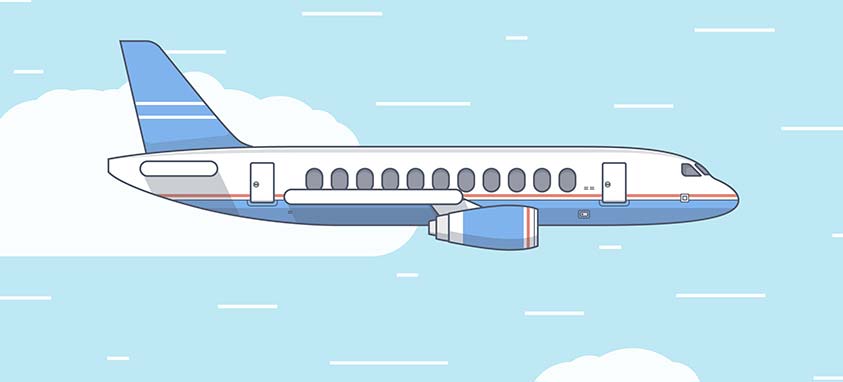Strategies for coordinating airlift for meetings and events
In an era where meeting and event planners have seen the cost of almost every component of events steadily rise, there is one bright spot: According to American Express Global Business Travel Forecast 2016 and other recent travel research, airfares within North America and to many international destinations—particularly in Asia and Latin America—will remain flat or even drop slightly throughout this year.
Then again, that lone factor doesn’t always help planners much because they have another critical consideration for their events: getting attendees to the destination on time and with minimal hassle. In fact, many cities and destinations can pose complications related to air capacity at certain times of year.
Case in point is traveling to the Caribbean: In the winter, the destination gets more airline seats but also much higher demand because of incentive programs and leisure travelers. Demand also affects Miami, since it is a primary connecting point to the Caribbean. Smaller destinations such as Vail and Aspen also get additional capacity in winter, but well-paying leisure travelers want those seats too; the possibility of weather-related delays goes up as well.
Even big cities have periods when airfares jump considerably, although capacity might be sufficient: Orlando in January, Phoenix in February, New York in summer, Chicago in May and October.
Learn When to Go Where
“Some organizers might think that wherever the meeting is taking place is where their planning begins and ends,” says Jamie Cook, CMP, managing partner at Strategic Meetings & Incentives in Phoenix. “Airlift is often not thought about, especially if you’re not booking it for attendees through a specific budget. But to reach the goals of any event, the whole experience comes into play. So you have to balance air costs with making sure the trip isn’t too inconvenient or aggravating for attendees.”
Furthermore, if some attendees miss half a day of sessions because they didn’t make connections or encountered delays, that’s an even more serious matter.
Connie Smith, director of group and corporate travel for Maritz Travel in Fenton, Missouri, says that planners should conduct an air analysis at the same time that they’re doing other site-selection research to narrow down destination possibilities.
“Use your meeting’s history to make sure the capacity into a destination matches well with where your attendees are coming from,” Smith says.
Another part of the air analysis is “finding out what other business events, sporting events, festivals and other big things are going on in each destination around your meeting dates,” Cook says. “Those things will affect air demand.”
Seat Blocks
Following an air analysis, planners can approach airlines to block out seats on key routes well in advance.
“If we know between 20 and 30 people are coming from Chicago, we get an airline to pull 30 seats out of inventory for us on certain flights,” Cook says. “And if you’re able to get people to come in from just three or four major airports, you can maximize your use of blocks.”
For some events taking place in Europe, the Caribbean or Hawaii, Smith will secure blocks on specific flights that arrive at the connecting city the night before; she also secures a block of rooms at a nearby hotel. All of this ensures that cross-country travelers make the connecting flight and they don’t arrive at the meeting tired.
Another upside to seat blocks: They generally don’t require passenger names until about 30 days out. There is a downside: Attrition penalties often start at 60 days out. So a planner must make decisions on how many seats to keep by that time or else incur financial penalties for releasing them later.
Charter Flights
In some situations, planners would be wise to consider charter flights. “With commercial flights, you’re paying the ticket plus a checked bag or two per person and seat-preference fees for many attendees,” Cook says. “A private jet might be close enough in cost that the experience would be worth it. They can customize everything on board for your group.”
Many commercial airports have private jet terminals that make check-in and boarding faster and more relaxed. And the charter can just be one-way; having attendees return home on commercial flights allows them to extend their stay if they choose.
There is one thing planners must do when considering private jets: “Use a broker who has access to enough inventory that if your contracted plane has a problem, they can get you another one quickly,” says Cook, who once lost use of a plane one week before an incentive program because the owner sold it. (Her broker secured another plane for the group.)
Educate Attendees
Planners can help educate attendees about travel patterns and company policies, and encourage early bookings. Specifically, attendees should be told which airlines are most active in the event destination; whether there are seat blocks from certain cities; who to contact to book into a block; and the deadline for booking into a block and individually.
“When people book early, they have a better chance of getting lower fares, as well as not paying for preferred seat assignments that can be as much as $80 each,” Smith says. “Late bookers can wreck a budget.”
Smith advises that planners do not allow deviations from policy on the inbound leg. This ensures full attendance for the start of the event at acceptable cost.




